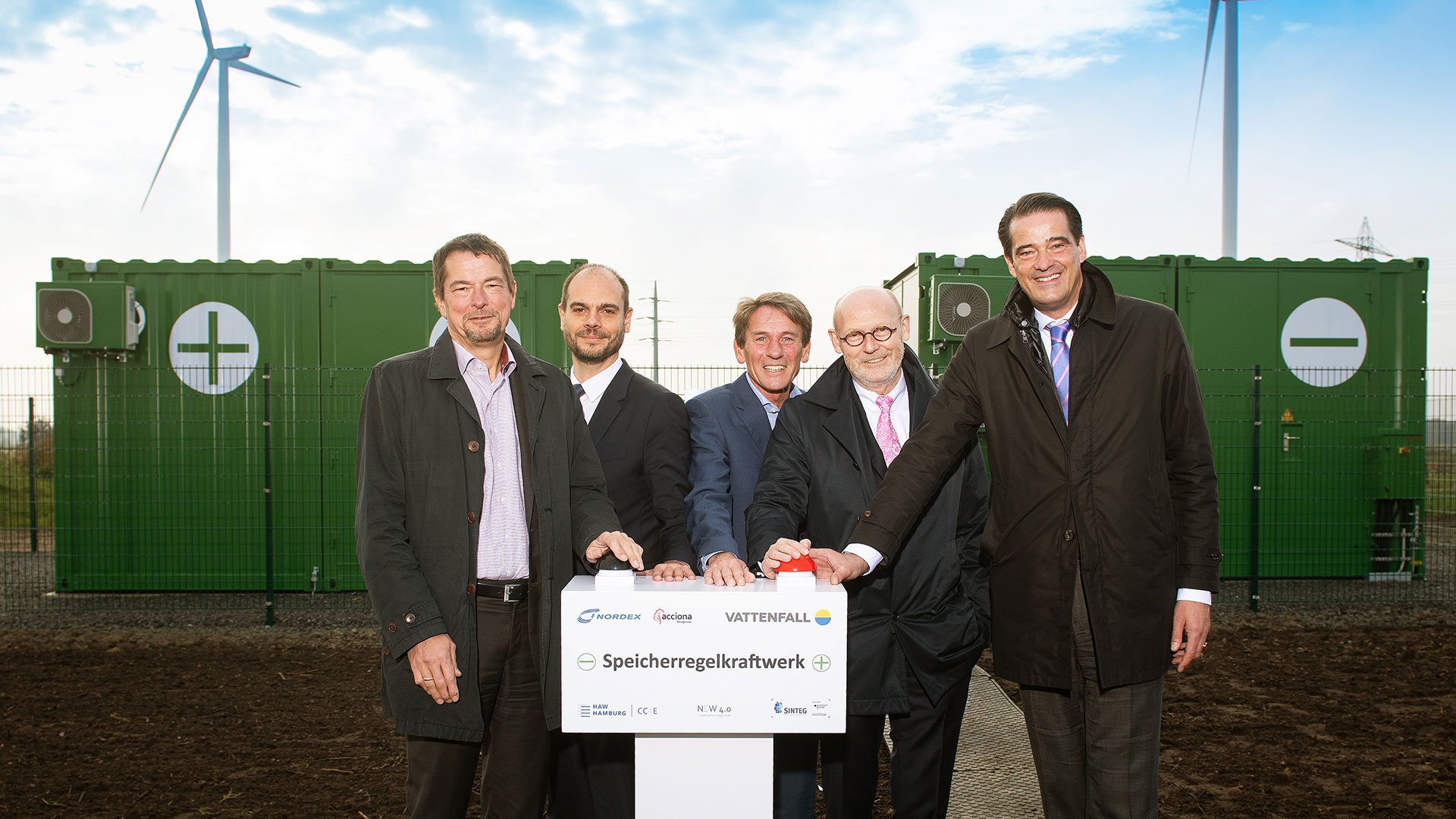Batteries, an important part of a fossil-free energy system
Energy storage will be the grease in the renewable-energy machinery.

Sebastian Gerhard
Batteries Director at Vattenfall
Climate change requires a rapid redesign of our energy landscape. The German federal government has therefore ordained that the share of renewable energies in electricity supply must be expanded to 65 per cent by 2030. The climate goals of other European countries are similarly ambitious. For example, Sweden aims to meet its electricity demand entirely from renewables by 2040, and across the EU the share of renewable sources in the electricity, heat and transport sectors is targeted at 32 per cent by 2030.
Complex requirements for the power system must be met in order to implement the necessary electrification in all sectors. Here the focus is on system services that will keep the frequency and voltage on the grids stable even with the increasingly volatile infeed of renewables. Up to now this task has primarily been handled by conventional power plants. In the future, distributed plants with high flexibility, such as battery storage facilities, can increasingly help to improve the integration of wind and solar power.
The share of wind and solar will grow, accompanied by falling costs. New and viable business models for the deployment of battery storage systems will arise. Sebastian Gerhard, Batteries Director at Vattenfall, presents a current overview of the subject:
Batteries and renewables: an ideal combination
Hybrid power plants combine wind or solar power generation with battery storage at the same location.

Battery storage system at the Pen Y Cymoedd site.
"This combination has lots of advantages. Generation, storage and grid connection use the same infrastructure, and they can be operated more economically thanks to synergy effects. Hybrid facilities with battery storage contribute to grid stability, and they can offer wind farm operators an alternative business model when the statutory subsidy from the EEC expires after 2020," says Sebastian Gerhardt.
Vattenfall's largest battery storage system is a 22-megawatt flagship project at the Pen Y Cymoedd onshore wind farm in Wales, which went live in 2018. The lithium ion battery storage system provides operating reserve for stabilisation of the transmission grid (Enhanced Frequency Response, EFR), as well as insights from the joint management of wind power generation and storage technology.

Battery storage system at the Princess Alexia Wind Farm in the Netherlands
At the Princess Alexia Wind Farm in the Netherlands, 88 BMW i3 batteries are integrated into a mega battery to store wind energy. A combination of wind and solar power with battery storage is planned for the Haringvliet Wind Farm near Rotterdam. There a 12-megawatt battery is expected to provide primary operating reserve starting in 2020.
In Hamburg-Curslack, a wind farm combined with battery storage has been operating since September 2018. This storage reserve power plant, which was built as part of the major project NEW 4.0 – Norddeutsche EnergieWende, will be used to research possibilities for the system integration of renewable energies.

Curslack battery storage system
Coupling with battery storage optimises electricity supply from the wind farm, so shutdowns of wind power plants in grid overload situations should be avoided as much as possible in the future.
Sebastian Gerhard outlines further possibilities for the deployment of battery storage systems: "We want to work together with the project partners Nordex and the Hamburg University of Applied Sciences to develop models for innovative system services. That involves reserve capacity to offset short-term variations in the grid frequency. In future, renewables in combination with battery storage could provide these services based on market demand."
Battery partnership: battery storage as a tailored solution for customers
Another ideal use case for battery storage is data centres. These customers have a specific power demand, a specific load profile, and strict requirements for uninterruptable power supply. Battery storage systems can be an alternative to diesel generators for backup power. In combination with an agreement for electricity supply with green power, data centres can be operated without dependency on fossil fuels.
These 'green power purchase agreements' (PPAs) – long-term agreements for electricity supply with green power that are concluded directly between an electricity customer (buyer) and a plant operator (seller) – will play an increasingly significant role in a market environment that will have to manage without EEC subsidies in the future. Many companies have set ambitious climate goals, and with a PPA they can improve their CO2 exposure and contribute to the energy transition.

Battery storage for peak shaving in Hamburg
Deployment of batteries for peak shaving can also be worthwhile for especially power-intensive industrial companies. Under peak load conditions, electricity is taken from the battery storage system instead of the electricity grid. The first customer for which Vattenfall installed a peak shaving system in 2018 is a large logistics company in the Hamburg area.
Batteries are also suitable for mobile deployment. At the first climate-neutral world ski championship this year, a mobile battery storage system from Vattenfall allowed skimobiles and electric vehicles to be charged with green power at all times.

Mobile battery storage system deployed in Are, Sweden.
In addition, Vattenfall also offers batteries for use in networks. The Swedish Business Unit Network Solutions is currently exploring ways to balance fluctuations in the network with the use of batteries. In this way, batteries could help avoid regional network bottlenecks.
The future of battery storage: more potential applications, more storage
Batteries can take on a wide variety of tasks. Along with storing and supplying electricity, these include system services for grid stability, balancing power services, peak shaving, and ensuring uninterruptable power supply.
"Other potential applications for batteries will also be conceivable in the future", says Gerhard. "For example, batteries can very easily transport energy from one point to another. Batteries can also be used to give plants black-start capability. In addition, large scale balancing services for power trading are conceivable, which could mean faster energy exchange market to avoid costs from unbalanced grids,”
However, today this sort of very large and very energy-dense battery deployment is too expensive.
“Aside from the cost factor, the batteries currently available on the market are not suitable for this deployment. The constant load cycles are very energy intensive, and they impact the service life," he says.
Another consideration is that deployment depends on the regulatory framework at the respective location and there are currently no market incentives for such applications.
The potential applications for battery storage on the way to an energy world without fossil-based power generation also require further technological development in several respects. Research is needed on the efficient deployment of the various battery types, and battery quality must be improved. Finally, future deployment of battery storage systems must be marketable, which means the costs must be significantly lower and the general conditions need to be optimised.
Sebastian Gerhard concludes: "Electromobility has massively boosted battery storage technology. Many companies, including us, are applying their expertise to enhance marketability and generation capacity. As a result, Europe is now developing into a major R&D centre for storage technologies."
Read more
500 BMW i3 batteries will stabilise the UK national grid at Pen y Cymoedd wind farm
Mobile energy storage facility is reinforcing the grid where it is needed most, Åre Sweden



